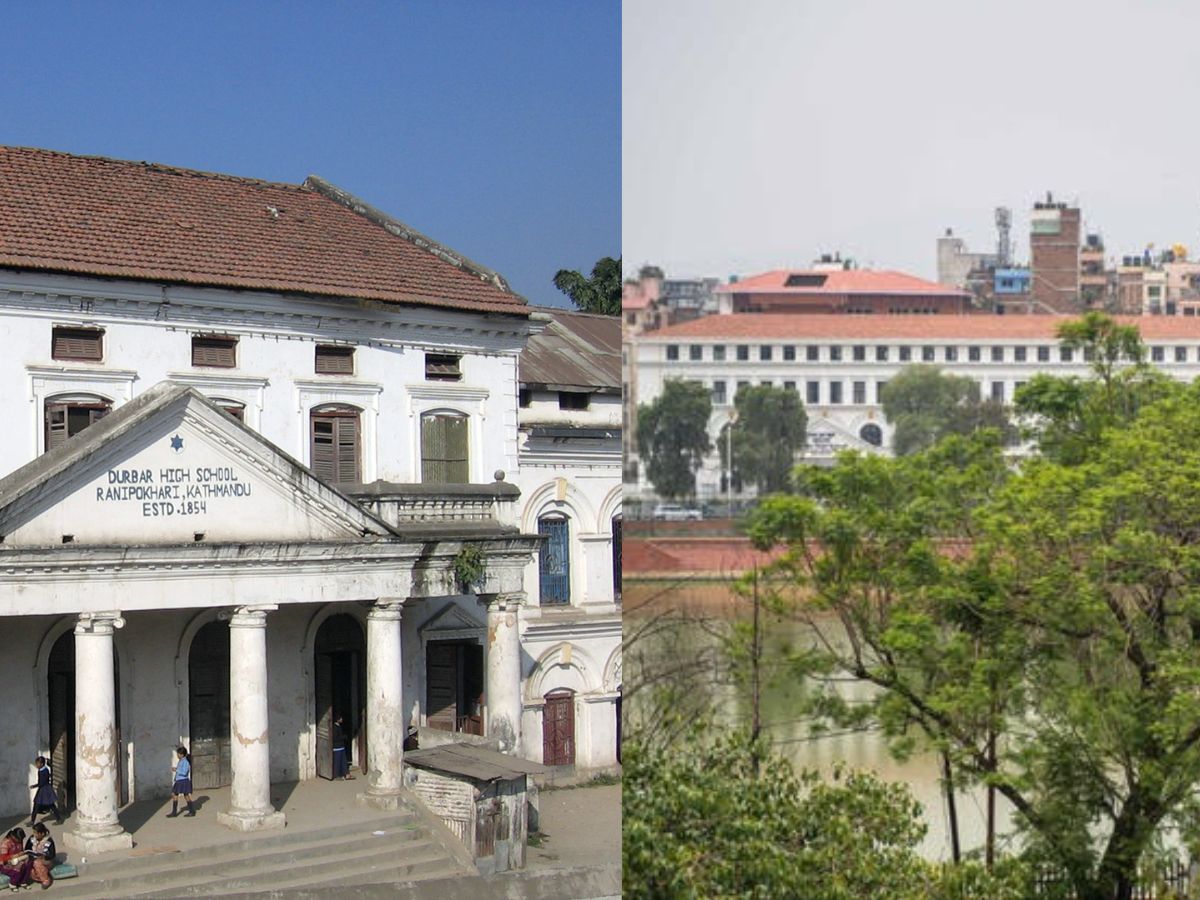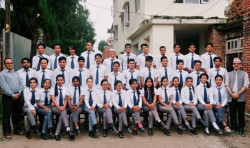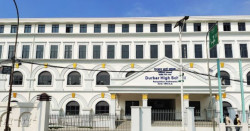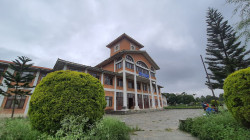Education
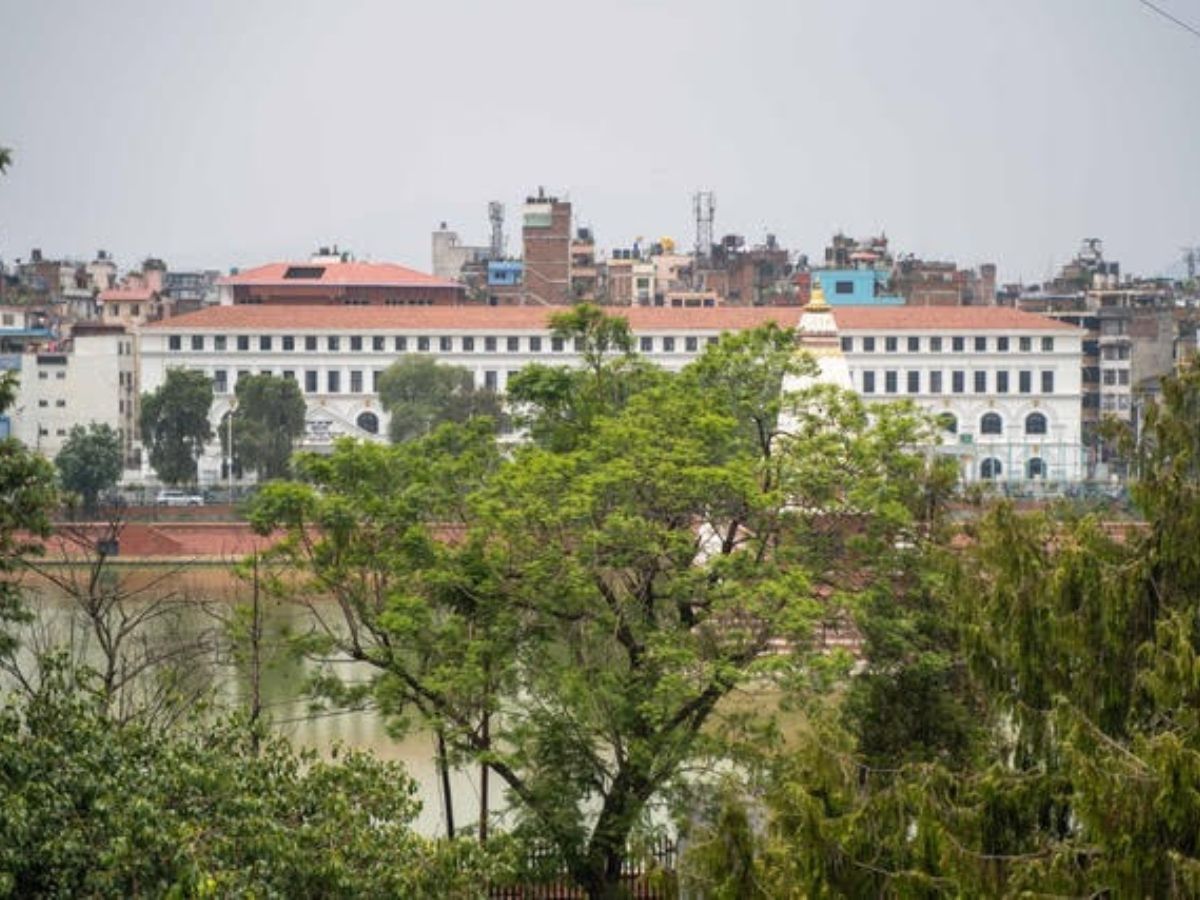
The principal sits behind an enormous desk, hands folded on it, in her square office painted white and blue. She stares outside the window and looks at the green waters of the historic Rani Pokhari for a second before going back to listen to the man sitting in front of her.
For the past 15 minutes, the man on the black couch is trying to convince her to approve the admission of his daughter, sitting next to him with her eyes downcast, in the Ninth Grade.
After she repeatedly refuses citing capacity issues, he places his card on her table and leaves with his daughter with a promise to call back in a few days. This is a daily occurrence for Sharada Paudel, the principal and economics teacher at Bhanu School.
The white four-storey Durbar High School building, located right next to Rani Pokhari, spreads across 4,200 square meters - which is still smaller than a football ground - yet it houses two separate high schools - Bhanu Secondary School and Sanskrit Secondary School.
And it appears to give a sense of pride to many local guardians to send their children to one of these schools seemingly thriving within a complex boasting a glorious history: Established in 1854, Durbar High School is Nepal’s oldest modern school. Now with a brand new modern building built with Chinese assistance after the 2015 earthquakes, which damaged the old building, Durbar High School doesn’t only look grand, it seems safer too for children to spend their days.
With a white-painted grand building, Durbar High School may look chic and grand, but the insides of the country’s oldest school narrate a completely different story: of overstuffed classrooms, of inadequate human resources, of shortages of basic facilities and equipment for children – all stemming from an acute shortage of funds.
Post-earthquake developments
When it was established in 1854, the Durbar High School was a no-go zone for the children of ordinary Nepalis; it was established exclusively for the children of the Rana family, who were forced to travel to places like Benaras in neighbouring India for education. Only after 1901, it started admitting children of non-Rana families thanks to reform-minded Rana Prime Minister Dev Shumsher.
For decades, Durbar High School operated inside old Rana-era buildings, but all that came crashing down after the 2015 earthquakes. It was rebuilt only recently with China Aid, which poured Rs 850 million into the reconstruction project, carried out by Shanghai Construction Group. The new building has many modern facilities that thousands of community schools around the country don’t have: such as a computer lab, canteen, and auditorium, to name a few.
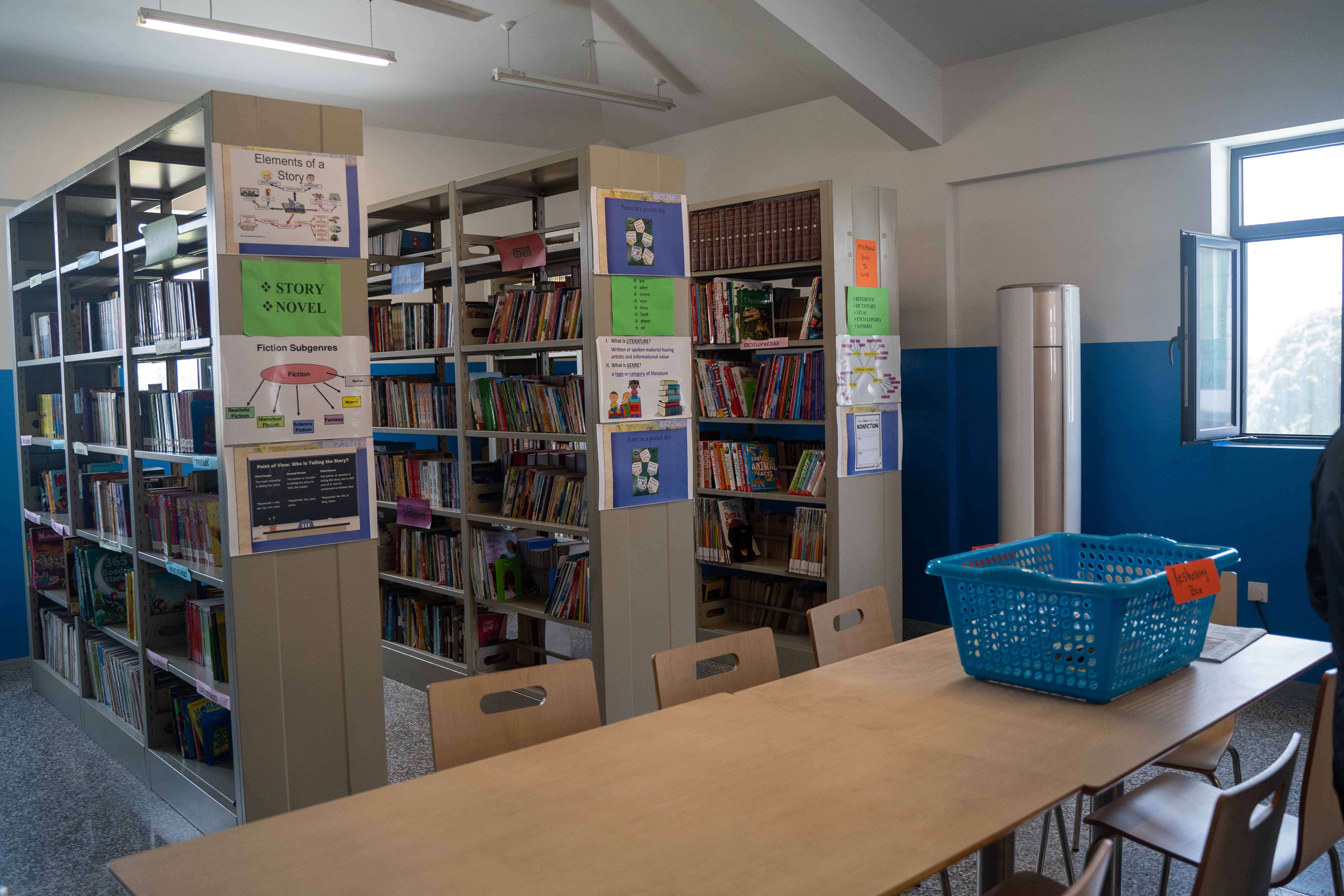
However, the upgraded building with modern facilities has caused problems for the school, the most significant of which being the increased electricity expenditures, propelled by modern lamps, bulbs, fans, computers, high-performance water pumps and so on.
Principal Sharada Paudel told NepalMinute: “Before the earthquake, the drinking water supply system would need to be switched on to fill the reserve tank, which would deliver water to the taps. Now when we switch on even one of the taps, the motor below runs on full power (because of automation). This leads to more electricity usage. Besides, there are also many generators.”
Shortage of funds
Bhanu School, which runs only day shifts, currently has 500 students from Nursery to Tenth Grade. It doesn’t collect any fees from the students, as education is free. But they do collect Rs 500 per month from them voluntarily. Apart from that, they are entitled to receive Rs 25,000 per year from the government for expenses.
On the other hand, Sanskrit School runs morning and day shifts for their 400-plus students.
While there is no fee for students in Sixth through Tenth Grade, it collects Rs 8,000 to Rs 10,000 per student per year from those in Eleventh and Twelfth grades. Apart from that, they receive Rs. 30,000 per year from the government.
What about the salaries? The government pays the teachers’ salaries for both schools. But there are other expenses such as water and electricity bills, stationeries, and computer repair charges that both these institutions must bear.
The electricity bill alone of the entire Durbar High School building amounts to Rs. 60,000 to 80,000 per month, which is split between the two schools. Additionally, they are mineral water and maintenance expenses too.
“In the so-called ‘free education system’, just paying the teachers’ salary is not enough,” says Shiva Raj Adhikari, principal of Sanskrit Secondary School. “We need money for managing things such as repairing and buying water jars. Therefore, if the government gives more budget to the school, it will be easy to run it. Otherwise, it is impossible.”
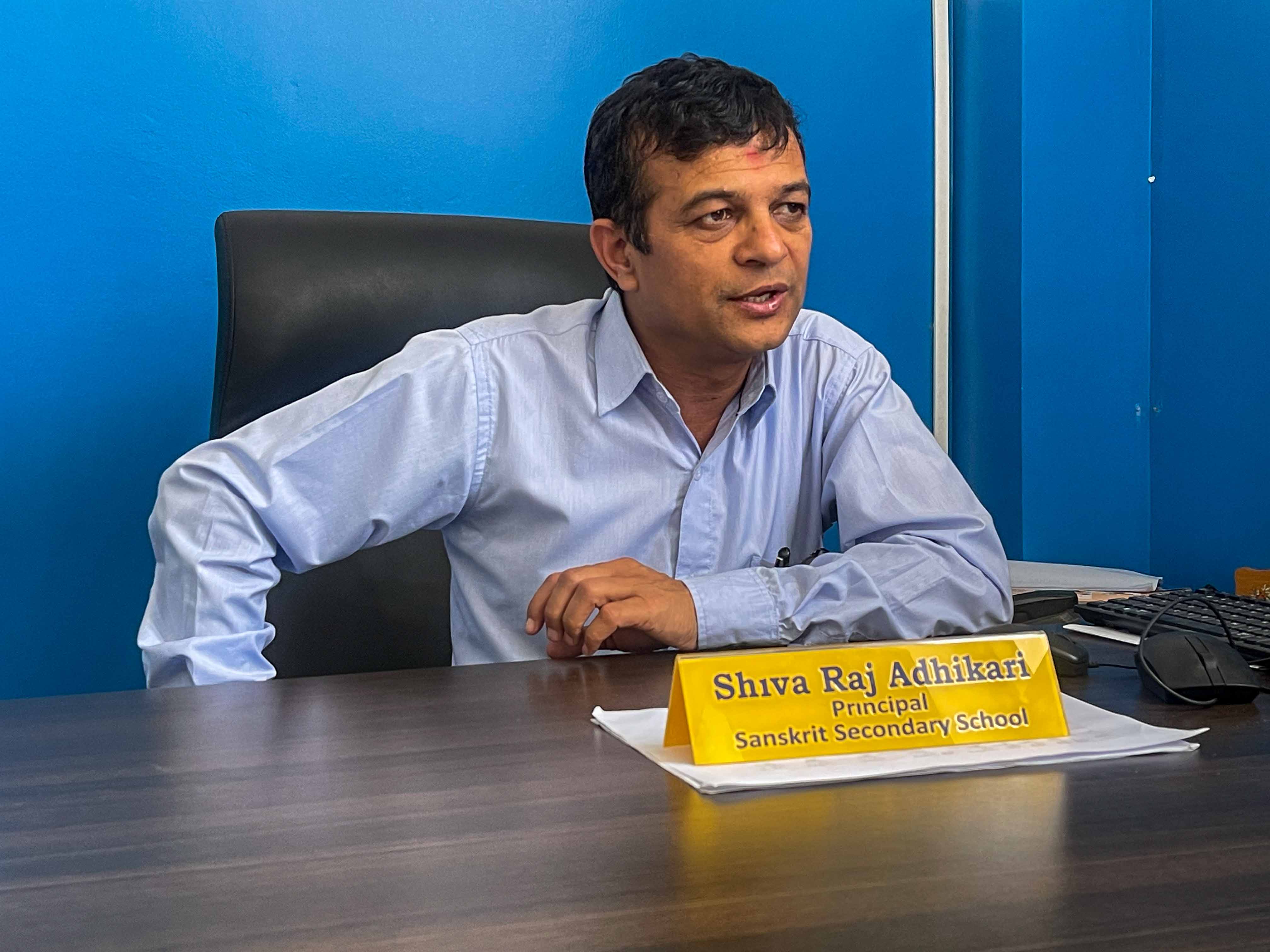
Sanskrit School must also cover the costs of extra teachers who teach during the morning shifts, as it falls outside of the normal working hours.
What is the government doing? When asked about the financial crisis that the two schools inside the Durbar High School premises are currently facing, Ram Prasad Subedi, Education Officer at Kathmandu Metropolitan City, said that the schools’ concerns would be addressed.
Informing that the Education Department at the KMC has separated some budgets to help several public schools, he told NepalMinute: “The schools have said that the water and electricity expenses have gone up and the budget is not enough for them.” Admitting delays in the disbursement of extra funds, he said that the extra budget would be approved soon.
Overstuffed classrooms
According to the Durbar High School building standards, each classroom should have only 36 students. However, the classrooms at both Bhanu and Sanskrit schools are filled to excess with students.
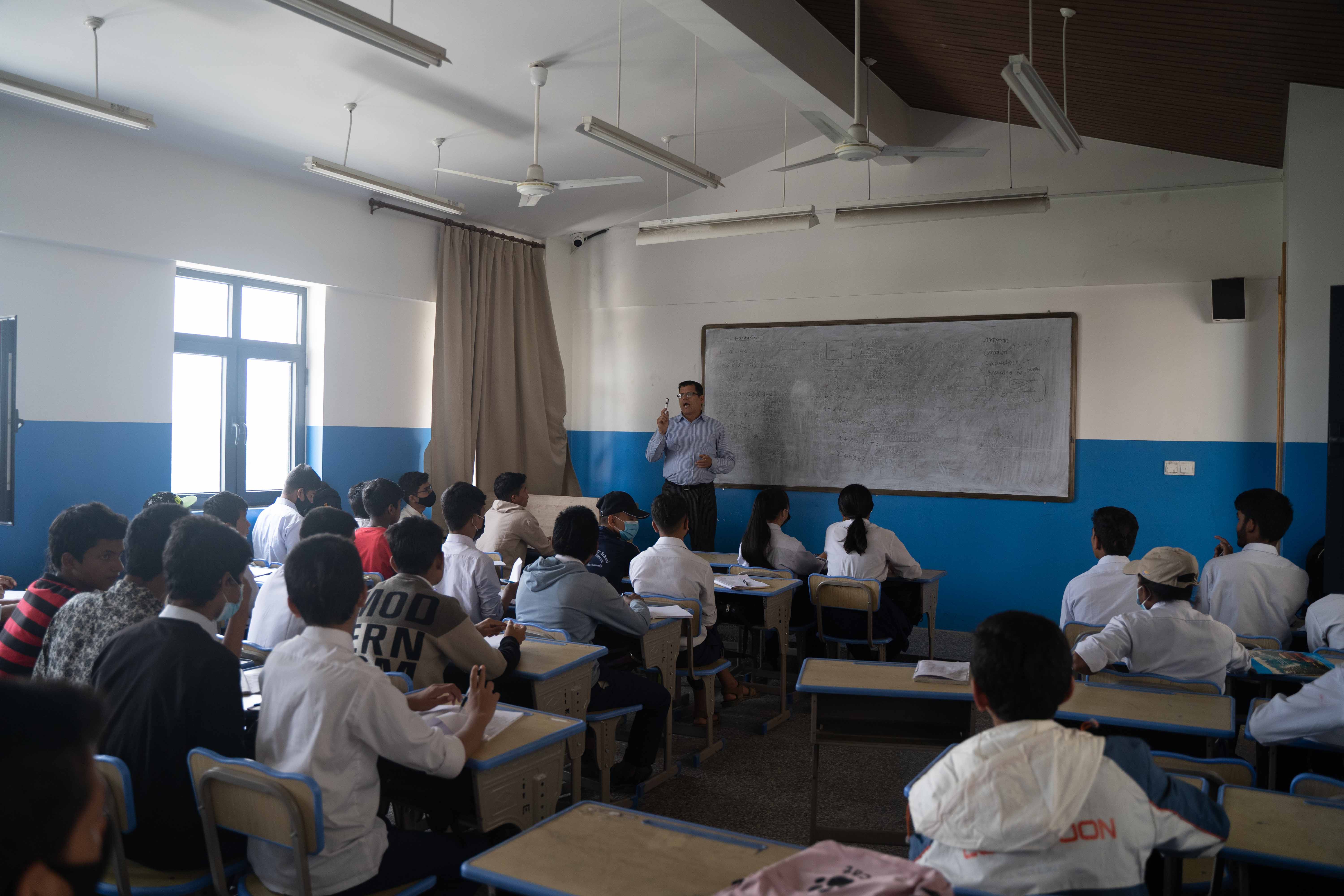
Despite that, both these schools receive calls, messages and even visits from parents trying to convince the principal for admission for their son or daughter.
Sanskrit school has accommodated 40 students in one class. But in Ninth Grade they have 48 students, as they receive the most applications for it. Principal Adhikari says the school doesn’t have a choice: “Even though we don’t want to keep students, we have to keep one or two because of pressure.”
On the other hand, Bhanu school has joined two or three desks and lined them up till the end of the classroom to fit 49 students. Now it has exceeded its maximum limit, says Principal Paudel: “We haven’t even divided sections because we want to concentrate on quality, not quantity. We would rather take fewer students and give better education.”
Bidya Nath Koirala, author and education expert, believes there are no quality parameters in the country against which the comparison can be made. But he has seen Durbar High School progress gradually compared to the olden days.
Koirala told NepalMinute: “Firstly, the number of students has increased. Secondly, leadership has changed. And thirdly, the teachers seem enthusiastic. I met the teachers once. They said that they are trying to restore the essence of the old Durbar High School (when it was renowned for high-quality education).”
While he does recognize their efforts, he is unsure if they will succeed. Because he says, the important questions are these: “Who are the students? Are the children of rich families? Or are the children of the middle-level family? Or do they belong to the local community?”
